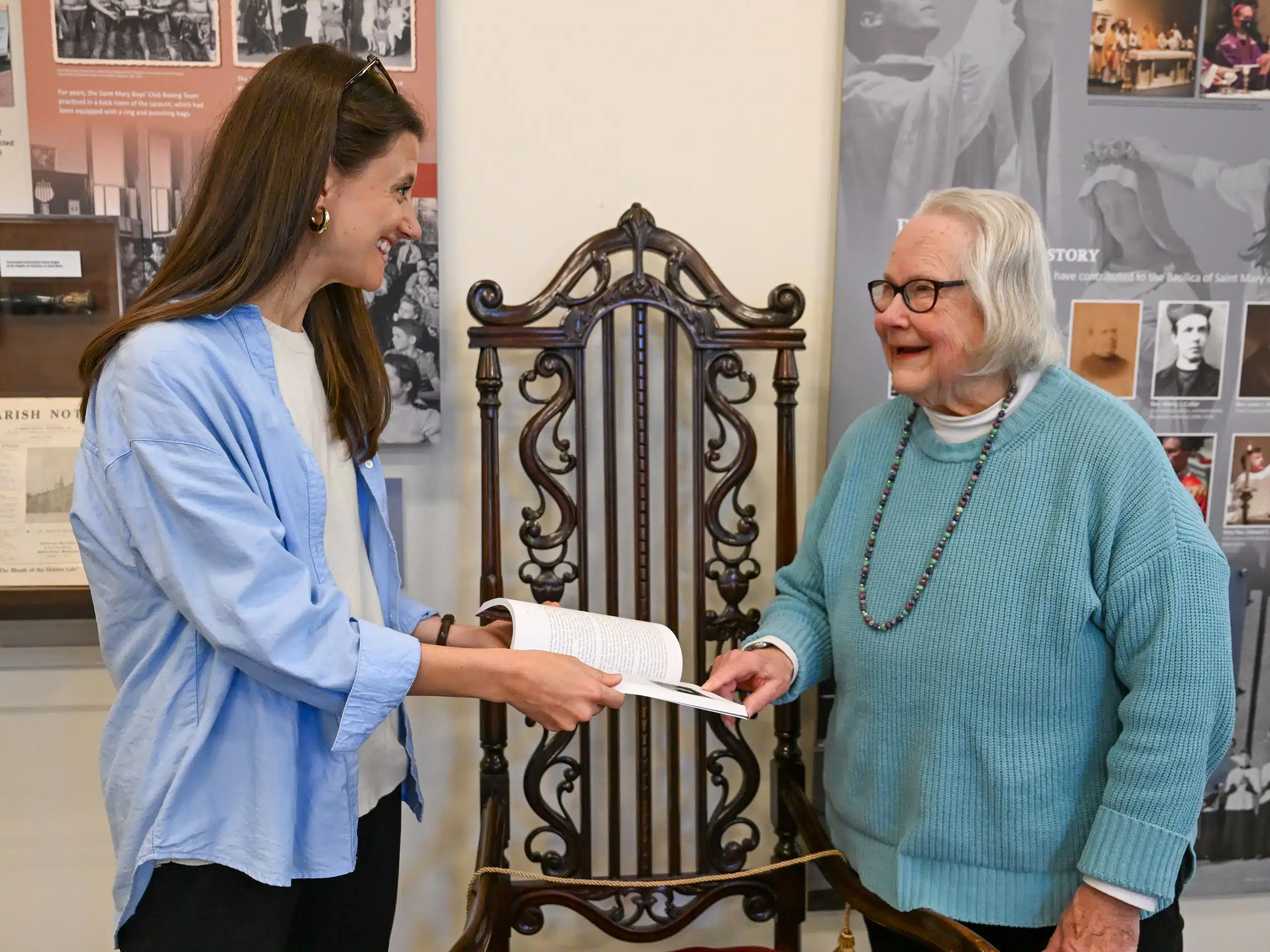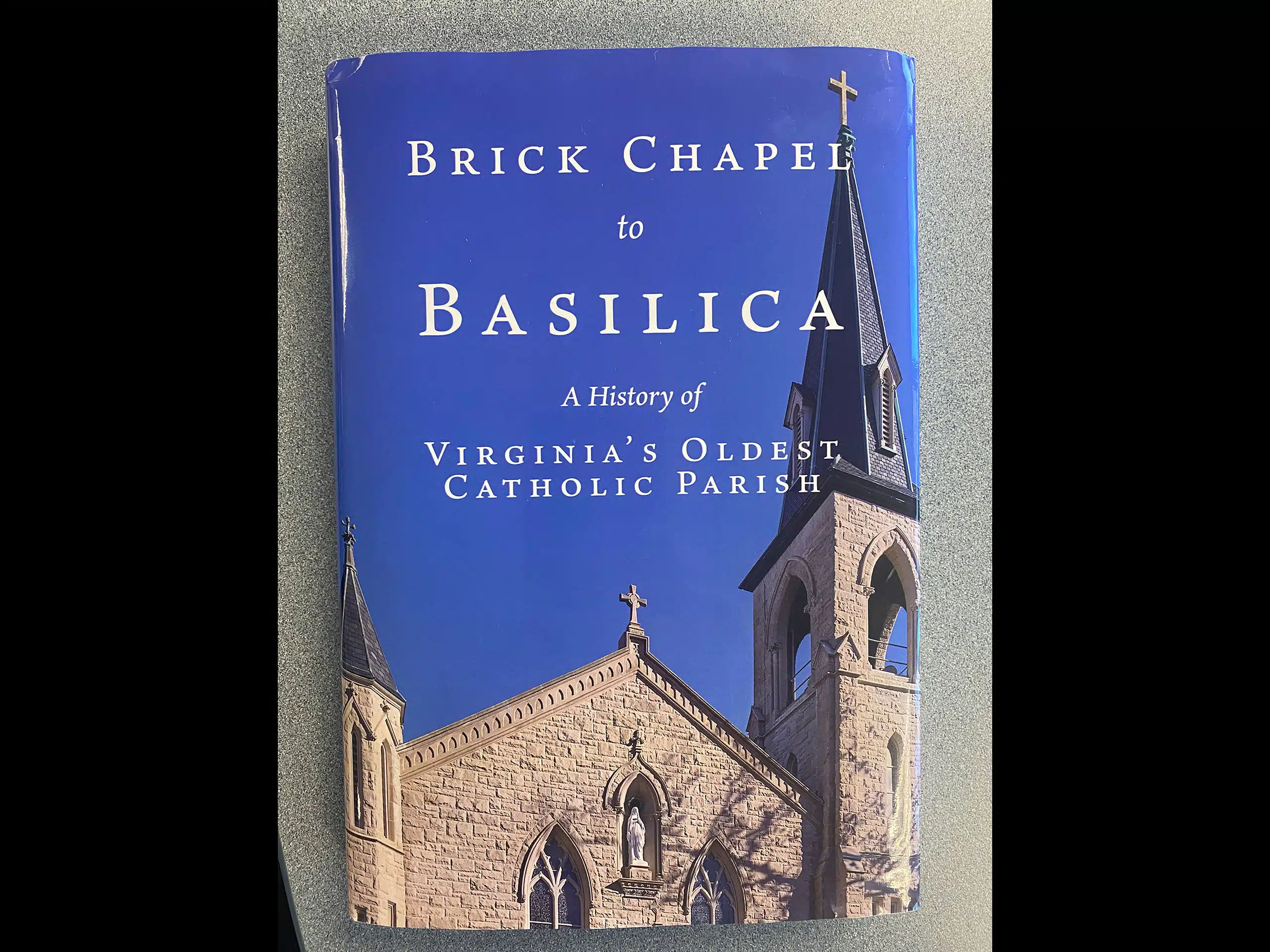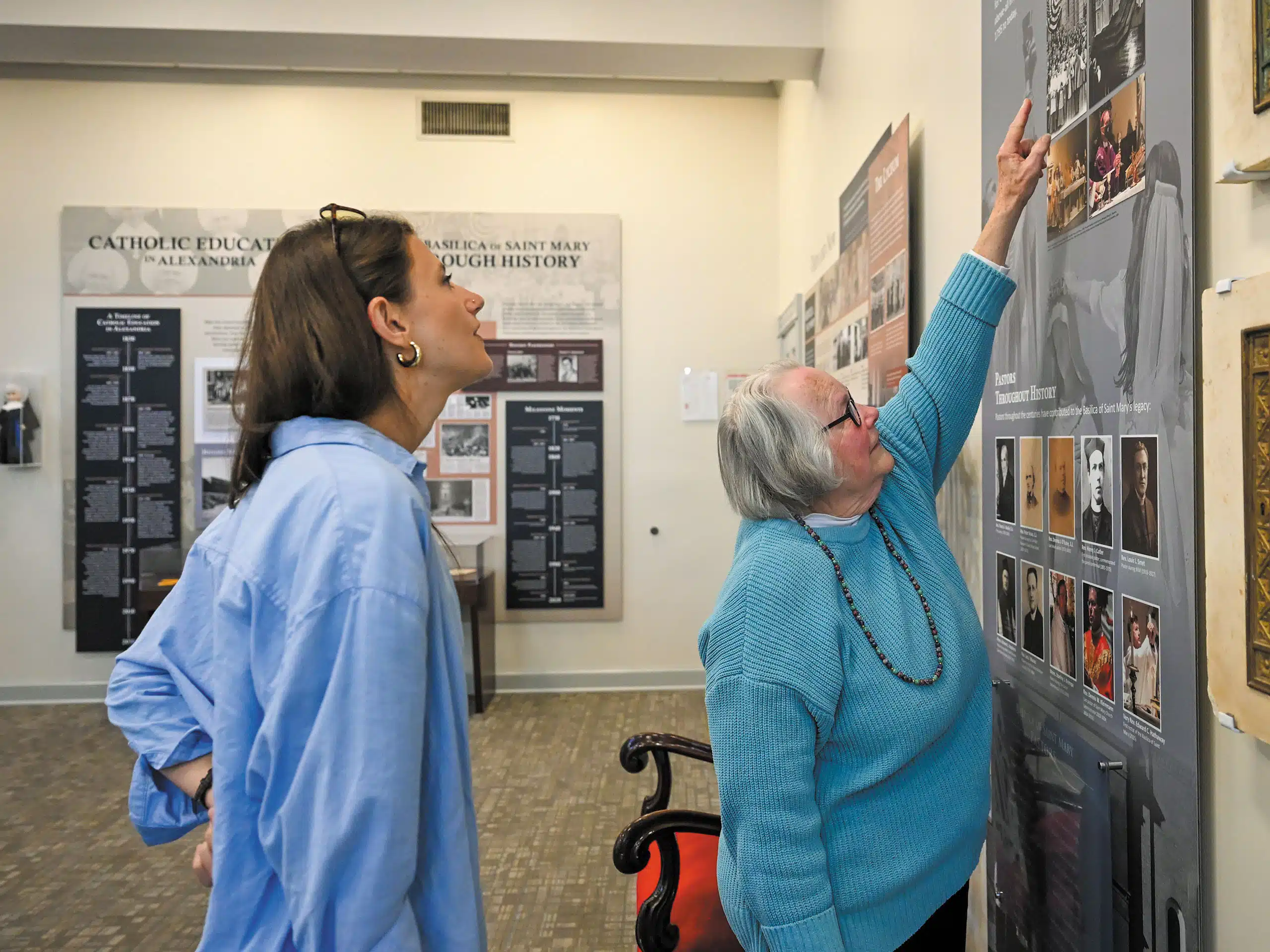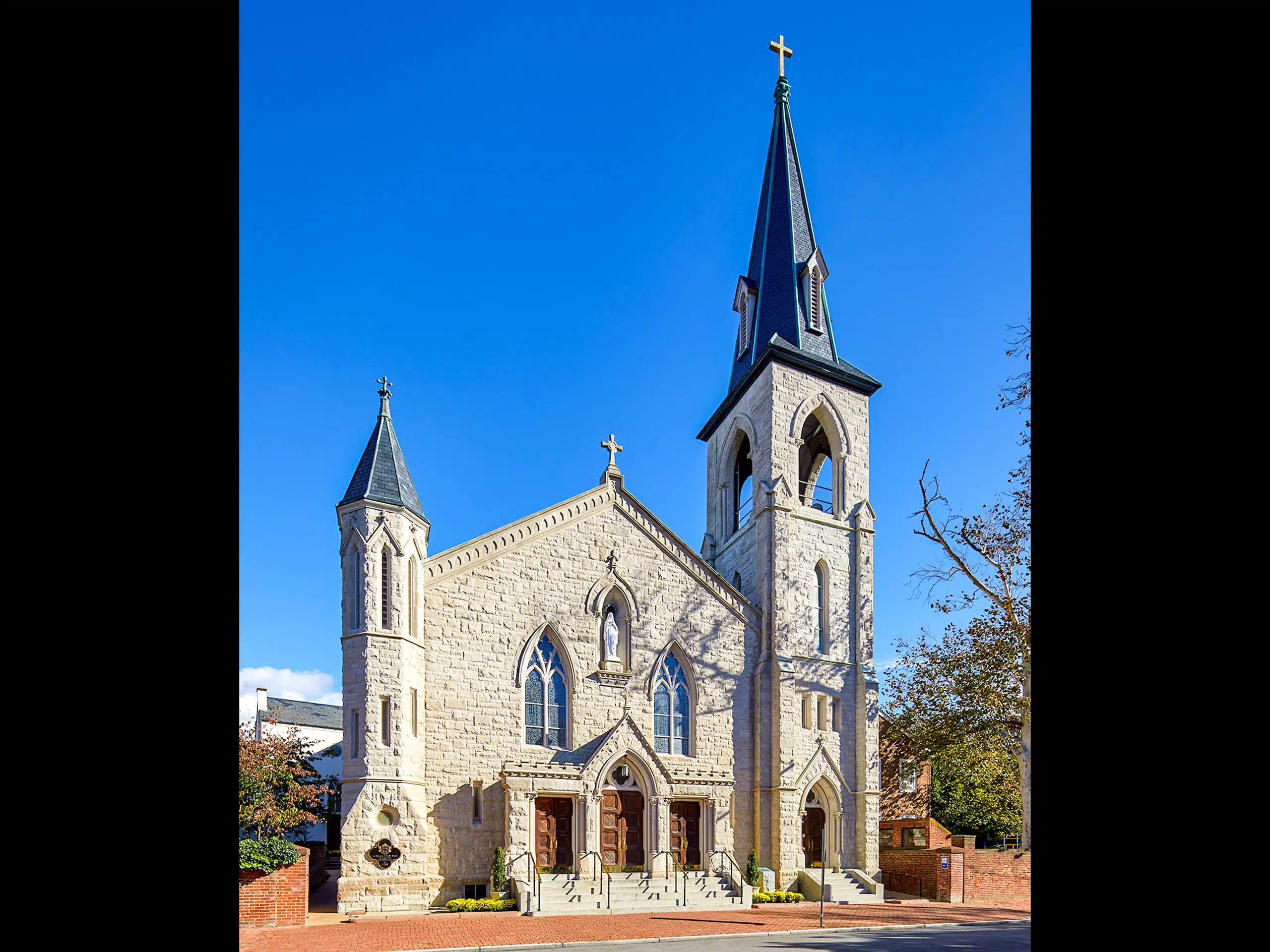It’s not every day that a parish turns 230 years old.
As the Basilica of St. Mary in Alexandria celebrates its milestone anniversary this year, parish historian Kitty Guy and archival manager Virginia Nyce released an updated book on the parish’s history.
The new book, “Brick Chapel to Basilica: A History of Virginia’s Oldest Catholic Parish,” is the fifth of the parish’s history books, the first of which was published in 1874. Guy published the fourth book in 1995. The newest addition, which was published in late 2024, originally was intended for the parish’s 225th anniversary in 2020, but was delayed due to the COVID-19 pandemic.
The new book has a fresh twist: a deeper examination of the lives of the people throughout St. Mary’s history.
“I wanted to write more about who the people were, who founded the church, where they came from,” Guy said. These Catholics ranged from George Washington’s Catholic friends and neighbors to free and enslaved Black Catholics who more than often received second-class status within the parish community up until the mid-to-late 1900s. “I feel like they deserved more attention than they got,” Guy said of the generations of Black parishioners, who historically were required to sit in a segregated section of the church.
The book moves chronologically from the arrival of Catholics in the English colonies in 1634 to the opening of the Basilica of St. Mary Museum in the parish lyceum last year. “For each new era, there’s a little bit of background given on what was the Catholic experience in the United States, but specifically in Virginia at the time,” Nyce said.
The book gives an entertaining description of the parish’s founding. On St. Patrick’s Day 1788, one of George Washington’s aides-de-camp, Col. John Fitzgerald, invited several prominent Virginians and Marylanders to his Alexandria home for a dinner party. At some point in the evening, the men discussed a pressing need for a house of worship for local Catholics, who at the time hosted private Masses in their homes. Col. Fitzgerald agreed to provide a majority of the funds, and in his financial ledger that day, Washington listed a donation of £1.50 sterling silver, “By the German Congregation in Alexandria gave them towards hiring a house for publick [sic] worship [£] 1 10 0,” according to the book.
Today, a plaque mounted near the basilica’s cornerstone commemorates Washington’s contribution to the growing Catholic community in Virginia.
The book describes the many events in American history weathered by the parish community, including the rise of the anti-Catholic Know-Nothing Party, Union occupation of Alexandria during the Civil War, the Great Depression, the 1918 influenza pandemic, World Wars I and II, the 9/11 terrorist attacks and the COVID-19 pandemic. It also documents the process through which the church was named a minor basilica by Pope Francis Dec. 6, 2017.
Following its designation as a minor basilica, the parish created its motto, “Omnes cum Petro ad Jesum per Mariam,” (“All with Peter to Jesus through Mary”), as well as a seal.
Guy and Nyce often consulted parish records and local sources, particularly the Alexandria Gazette and the Catholic Virginian to research the book. They pieced together stories of individual parishioners and parish priests who played a role in shaping the local community.
Thomas Blair, a Black parishioner who served as St. Mary’s caretaker, or sexton, for 30 years, was one such parishioner. In 1913, he gathered a group in the parish lyceum to discuss the need for a parish for Black Catholics in Alexandria. His efforts led to the founding of the historic St. Joseph Church in Alexandria in 1915.
The book paints a picture of the many social groups and ministries of the parish over the centuries. For instance, during World War II, groups such as the Virginia Victory Volunteers (“the 3-V’s”), St. Mary’s Canteen, the Knights of Columbus and the St. Mary’s Boys Club (a boxing club) organized meals, dances and other forms of entertainment for armed forces stationed in the area. The parish community also participated in war bond sales, Red Cross volunteer service and clothing collections for the war effort.
“It was a very vibrant parish life, and it was fun to read about what life was like in the parish and at the school,” Nyce said.
The fifth book likewise delves into the origins of St. Mary School, today known as the Basilica School of St. Mary. Guy said she even traveled to Indiana to locate records from the Sisters of the Holy Cross, who used to run and teach at the school.
For Guy, preserving the history of the Basilica of St. Mary in Alexandria is more than an academic interest. It’s about preserving a family legacy. Guy’s ancestors were among the founding parishioners of St. Mary. Their proverbial fingerprints can be found all over the parish’s history.
One of her favorite family stories was that in 1929, her great-grandfather Joseph M. Monroe was serving as organist. While he was playing vespers, the church caught fire. He immediately shouted, “Fire!” helping everyone to safely escape the burning church. The book attributed the blaze to a lightning strike “igniting the electrical system in the church. The loss was estimated at $60,000 and included the $10,000 organ, which was destroyed when the burning ceiling fell on it.” The church would be renovated over the next two years.
For Nyce and Guy, the book provides a unique perspective into how a once-small parish community has grown to impact the large, modern-day community of Alexandria.
“The impact that St. Mary has had on the local community over the years is sometimes overlooked or underappreciated,” Nyce said, “but I think St. Mary has done so much for the Alexandria community.”
Find out more
To purchase a copy, go to bit.ly/4giM0f8 or call the parish office at 703-836-4100.
This article has been updated.






